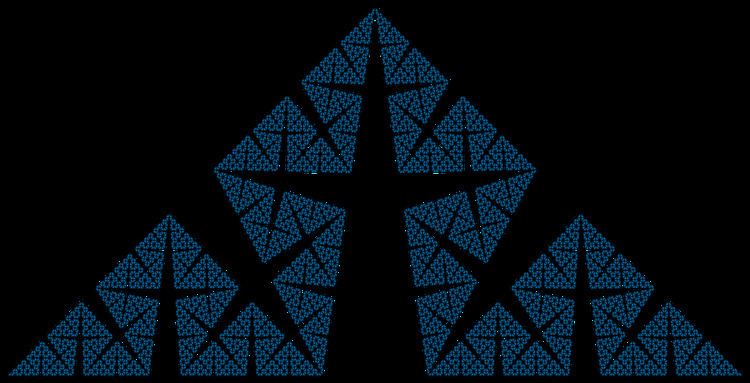 | ||
In mathematics, an Osgood curve is a non-self-intersecting curve (either a Jordan curve or a Jordan arc) of positive area. More formally, these are curves in the Euclidean plane with positive two-dimensional Lebesgue measure.
Contents
History
The first examples were found by Osgood (1903) and Lebesgue (1903). Both examples have positive area in parts of the curve, but zero area in other parts; this flaw was corrected by Knopp (1917), who found a curve that has positive area in every neighborhood of each of its points, based on an earlier construction of Wacław Sierpiński. Knopp's example has the additional advantage that its area can be controlled to be any desired fraction of the area of its convex hull.
Fractal construction
Although most space-filling curves are not Osgood curves (they have positive area but often include infinitely many self-intersections, failing to be Jordan curves) it is possible to modify the recursive construction of space-filling curves or other fractal curves to obtain an Osgood curve. For instance, Knopp's construction involves recursively splitting triangles into pairs of smaller triangles, meeting at a shared vertex, by removing triangular wedges. When the removed wedges at each level of this construction cover the same fraction of the area of their triangles, the result is a Cesàro fractal such as the Koch snowflake, but removing wedges whose areas shrink more rapidly produces an Osgood curve.
Denjoy–Riesz construction
Another way to construct an Osgood curve is to form a two-dimensional version of the Smith–Volterra–Cantor set, a totally disconnected point set with nonzero area, and then apply the Denjoy–Riesz theorem according to which every bounded and totally disconnected subset of the plane is a subset of a Jordan curve.
